YouTube Marketing Strategy: Grow Your Channel
If you’re getting into video marketing, there’s no better channel than YouTube. It’s right behind Google, and the No. 2 social media platform after Facebook. Oh, and it reaches more than 2.5 billion monthly active users (MAU). That’s a...
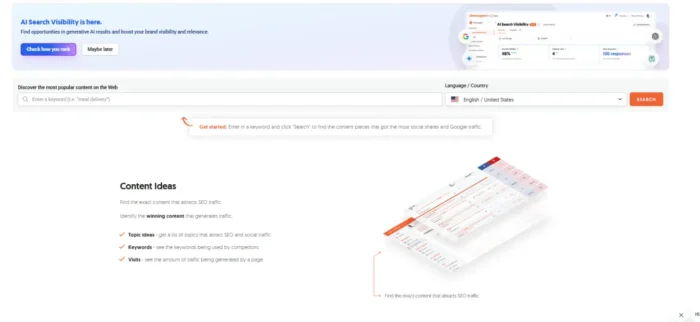
If you’re getting into video marketing, there’s no better channel than YouTube.
It’s right behind Google, and the No. 2 social media platform after Facebook. Oh, and it reaches more than 2.5 billion monthly active users (MAU).
That’s a lot of eyes. And it’s why your YouTube marketing strategy matters.
Think about it. Searchers often click video first for “how to,” reviews, and comparisons. If your video answers the question clearly, you win two placements (on YouTube AND Google) with one asset.
That search role matters more now. Google results and AI Overviews are citing YouTube videos far more often. That means the right video can earn visibility on YouTube and in Google’s AI-enhanced results.
Here’s how to take advantage of YouTube’s massive reach and growing role in search.
Key Takeaways
YouTube is still a search engine first. Optimize every video like a web page. Titles, keywords, and descriptions all matter. Short-form video drives discovery. Use Shorts to grab attention and push viewers toward your long-form content. Consistency beats virality. One great upload won’t build your channel, but showing up weekly will. Engagement fuels growth. Comments, likes, and watch time tell YouTube your content deserves more reach. Cross-promotion multiplies exposure. Share clips across LinkedIn, Instagram, and email to spark early momentum and feed the algorithm.Why Market on YouTube?
Short-form video is where attention stacks up right now.
More than 120 million people watch YouTube every day. That’s reach you can’t ignore.
It also fits how people search. Viewers type questions into the platform, often searching for product comparisons or “how-to” content. That’s the magic of YouTube marketing: Your video can rank on YouTube and, increasingly, get pulled into Google’s AI results.
The numbers are staggering. Total YouTube citations are up more than 400 percent in AI Overviews alone, per Ubersuggest data.

Shorts adds even more surface area. YouTube confirmed 200 billion daily Shorts views in 2025. That’s a firehose of discovery for quick tutorials, comparisons, and teasers that push to deeper content.
And it’s accessible. You don’t need a studio. A phone, a clear topic, and tight editing are enough to compete in most niches.
Start with one Shorts series and one weekly long-form video. Just be sure to use chapters as well as strong titles and descriptions that read like answers. Steer clear of slogans.
New to planning video content? This video marketing primer will help.
YouTube gives you search demand, social discovery—and now large language model (LLM)-level visibility—all in one place. That mix is hard to match.
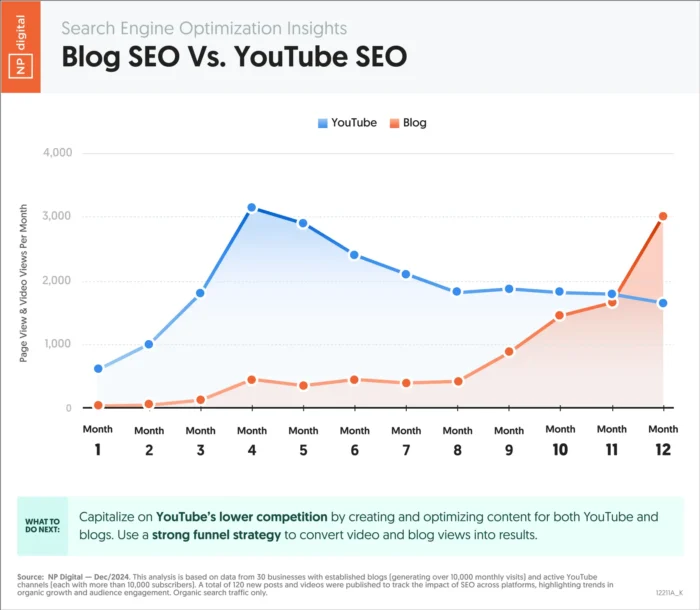
Part 1: Find Your Place in the YouTube Landscape
There are now more than 100 million YouTube channels. That’s a massive jump from just a few years ago.
You’ll find everything from tech reviews and finance breakdowns to ASMR and speed cleaning. There’s even a channel about a lawyer who picks locks.
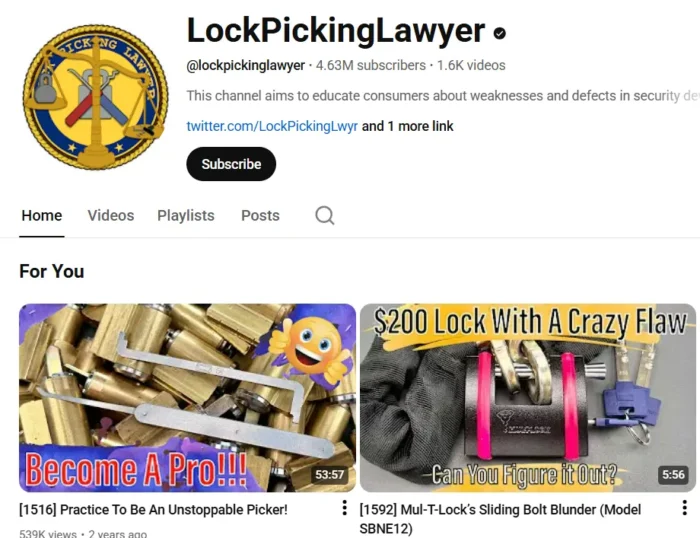
With that much competition, your YouTube marketing strategy has to start with clarity: who you’re talking to, what kind of content they actually want, and where you can add something different.
That means:
Pinpointing your target audience. Choosing the video formats that match their attention span. Studying competitors to see what’s working and where the gaps are.Once you know your lane, everything else—your topics, cadence, and growth plan—gets a whole lot easier.
Figure Out Your Target Audience on YouTube
YouTube is too big to win by going broad. “Everyone” isn’t an audience. The sweet spot is finding a niche that’s specific enough to stand out but big enough to grow.
Start with who already buys from you. Look at your website analytics and social media insights to see who’s engaging most.
Age, interests, and location all help. Tools like Google Analytics and YouTube Studio can show you what your current audience searches for and watches next.
Then, build a quick buyer persona:
Who are they? (job title, interests, pain points) What do they search on YouTube? When and how do they watch? On desktop, mobile, or TV? What tone or style do they respond to?Once you define that persona, brainstorm content they’d actually click. If your viewers are marketing managers, short “how-to” clips might work better than 20-minute explainers.
You don’t need to reach everyone, just the right people often enough that YouTube’s algorithm starts recognizing your audience and recommending your videos to more like them.
See the Types of Videos Your Target Audience Likes
It’s not enough to know who your target audience is. You need to understand what kind of videos they like to watch. There are hundreds of different types of videos on YouTube:
Start by checking what’s already working in your niche. Search your main keywords on YouTube and filter by “Most Viewed.” Make note of formats that dominate the results:
How-to tutorials: Great for education-driven niches. Explainer videos: Ideal if you sell products or software. Case studies or success stories: Perfect for B2B audiences. Listicles and tips videos: Work well for lifestyle and marketing content. Shorts: YouTube’s fastest-growing format, great for quick insights, teasers, or trends. Livestreams: Build community and drive real-time engagement.Use YouTube Analytics to compare your own watch times, click-through rates (CTR), and retention graphs. You can also plug your top-performing videos into Ubersuggest and use the Content Ideas tool to see related topics gaining traction.
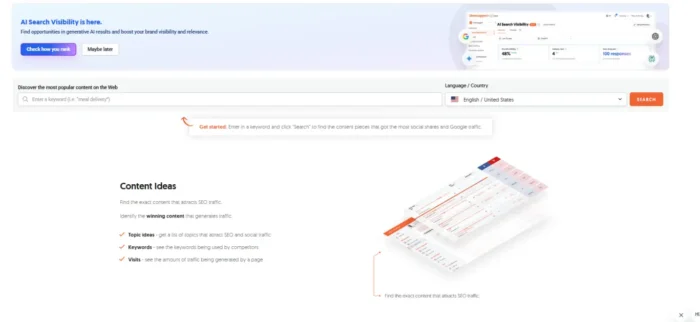
Don’t settle for just copying what’s popular. The goal is to spot patterns in what your audience values, and then make those formats your own.
Short-Form Videos
Short-form video is the new default. YouTube Shorts now gets over 200 billion views a day, which means your audience is already scrolling there.
People love short-form content because it’s fast, visual, and snackable. They can learn something, laugh, or get inspired in under a minute. For brands, that’s a huge opportunity to build awareness and trust without needing a big budget.
Use Shorts to highlight quick takeaways, answer common questions, or tease a longer video. Think of them as “trailers” for your main content.
Repurpose what you already have:
Cut 15- to 60-second clips from your best-performing videos. Turn customer quotes or stats into vertical video slides. Use one key insight per clip. Don’t cram in too much.Shorts also travel well. You can cross-post them to Instagram Reels, TikTok, and LinkedIn to expand your reach without doubling your workload.
Start small, stay consistent, and you’ll see which ideas hook your audience fastest.
Check Up on Your Competition
You’re not creating in a vacuum. Every niche on YouTube already has leaders. Studying them is one of the fastest ways to sharpen your YouTube marketing strategy.
Start by searching your main keywords and noting who consistently ranks on the first page. Those are your real competitors.
Then use tools like vidIQ or TubeBuddy to see what’s driving their performance. Pay particular attention to metrics like average views per video, upload frequency, engagement rate, and keyword use.
Go beyond views, too:
What video formats do they use most? Tutorials, reviews, Shorts? How do they open and end each video? What topics or questions show up repeatedly in their comments?Your goal isn’t to find the gaps. If competitors focus on broad topics, go deeper. If they post irregularly, show up consistently.
Learn the playbook, then rewrite it in your own voice.
Part 2: Create A Great Channel Layout and Organize Your YouTube Content
First impressions matter.
When people land on your channel, they should instantly know who you are, what you talk about, and why they should subscribe.
Here’s my channel:
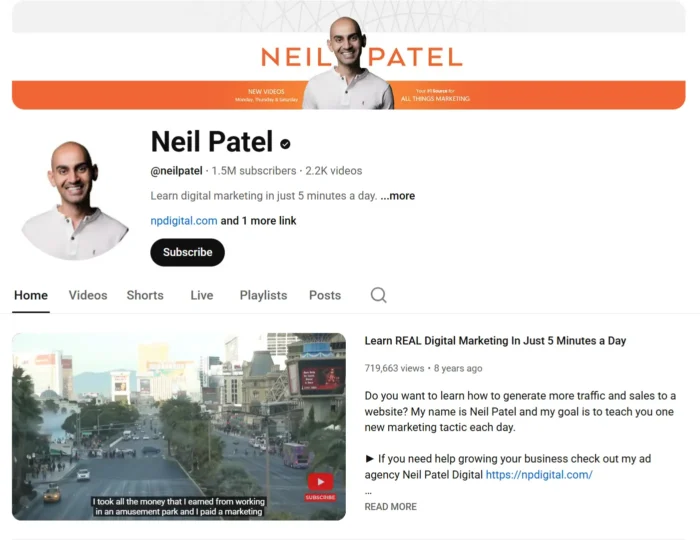
My value proposition and color scheme are simple and match my website. The banner says how often I publish new videos. My trailer is like an extension of the value prop.
A clean, consistent channel layout builds trust fast.
Start with a short trailer that introduces your niche and what viewers can expect from you. Use a simple banner that matches your website’s look and feel, and make sure your “About” section includes a clear description, publishing cadence, and links to your website or lead magnets.

Group your videos into playlists organized by topic or intent, by tutorials, product demos, case studies, or Shorts, for example. Playlists help with binge-watching and signal YouTube that your content fits together, which improves discoverability.
The goal is to make your channel feel like a well-organized library, not a random drop box of uploads.
Next, I’ll show you how to plan your upload schedule and design thumbnails that get clicks.
Create Regular YouTube Content With a Content Calendar
The algorithm rewards consistency. So does your audience.
A good posting rhythm might be one long-form video per week and two to three Shorts. That balance keeps your channel active without burning you out.
A content calendar helps you make that consistency sustainable. Tools like Notion, Trello, or Google Sheets work fine for scheduling.
Plan your topics by theme (e.g., SEO tips one week, case studies the next) and map your filming and editing days so uploads never sneak up on you.
Track ideas that come from your comments or analytics. If a video starts outperforming, use it as a springboard for spinoff Shorts or deeper follow-ups.
Think of your calendar as a publishing system and pillar of your overall content marketing strategy. It keeps you accountable and makes sure every video ladders back to your larger YouTube marketing strategy.
Design the Right YouTube Thumbnails
Your thumbnail is the visual hook. It’s what earns the click.
Today’s best-performing thumbnails are simple, bold, and emotionally clear.
Avoid clutter and heavy text. Focus on one focal point: a face, an object, or a clear action shot. Add minimal copy (four words or fewer) that reinforces the video title rather than repeating it.Bright, high-contrast colors still grab attention, but brand consistency matters more. Stick to the same font, color palette, and framing so viewers instantly recognize your channel.
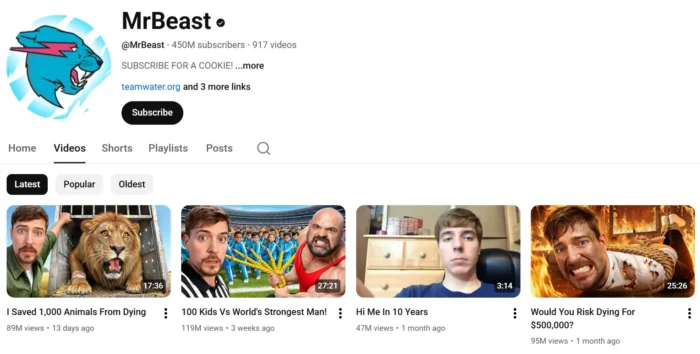
Pro tips:
Faces win. Thumbnails with expressive faces tend to get higher click-through rates. Use visual contrast. Use a light subject and dark background (or the reverse). Keep it honest. Don’t mislead viewers with clickbait. You’ll hurt retention and trust. Design mobile-first. Nearly 70 percent of views happen on phones, so test how your thumbnails look small. According to NP Digital, B2C content gets nearly 60 percent of views on mobile, with just under 50 percent for B2B content.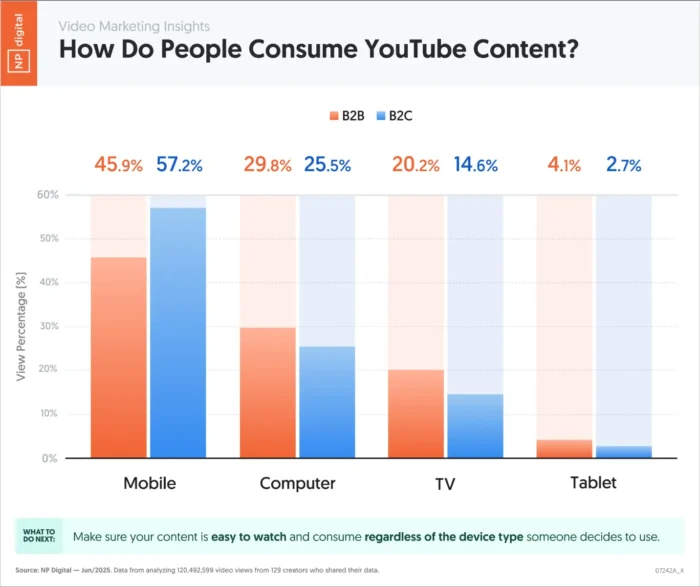
Tools like Canva and Figma make quick testing easy. Create two to three versions, check CTR in YouTube Studio, and double down on what performs.
Part 3: Use YouTube SEO to Increase Traffic
YouTube is more than a social platform. It’s the second-largest search engine after Google, with more than 20 million videos uploaded every day.
That’s your competition.
The good news? You can still rank high without ads if you know how to optimize your videos for search.
In this section, we’ll cover the basics, like how to research keywords, write clickable titles and descriptions, and structure your videos for discoverability.
If you want a deeper dive into the full process, check out my full guide on YouTube SEO.
Keyword Research on YouTube
Every strong YouTube SEO strategy starts with keyword research. You can’t optimize what you haven’t defined.
Look for keywords your audience is already searching for. Tools like Ubersuggest, TubeBuddy, and vidIQ can show search volume, competition level, and related keyword ideas directly from YouTube data.
Here’s the key: YouTube search intent isn’t always transactional. It’s informational.
So, focus on “how to,” “best,” “tutorial,” and “review” phrases. They’re gold because they match how users search when they’re ready to learn or buy.
Writing Great Descriptions
Your description is prime SEO real estate. YouTube gives you 5,000 characters to work with. Use it.
Start strong. Mention your focus keyword in the first 25 words and naturally repeat it two or three times throughout. Use short paragraphs or bullet points so it’s easy to skim.
Structure your description like this:
Hook: One or two sentences that summarize the value of the video. Context: Expand on the topic, naturally using keywords. Next steps: Include links to related videos, your website, or lead magnets.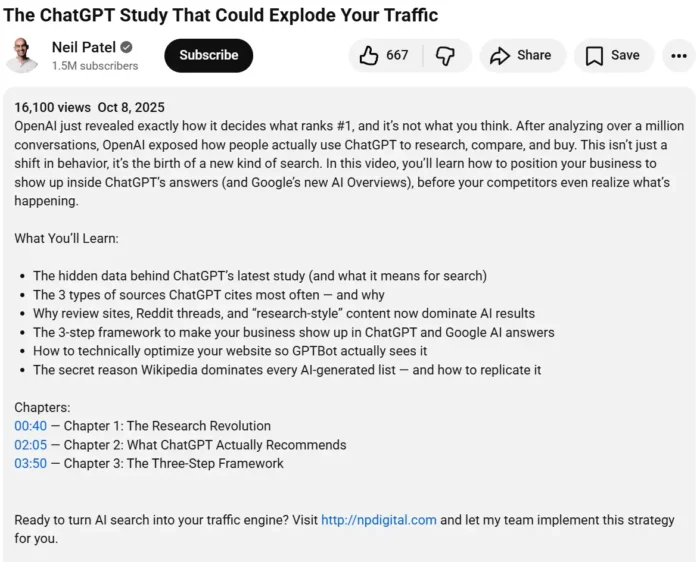
Add timestamps for long-form videos and external links above the fold (before the “Show More” cutoff).
Above all, don’t keyword stuff. Write like you’re helping a person, not an algorithm. The algorithm will notice anyway.
How to Write a Great YouTube Title
This is one area you cannot ignore. Even if your content is great, it won’t matter if you can’t get people to actually click on your video in the first place.
A strong title can make or break your video’s performance. You only get about 50 to 55 visible characters on desktop, so every word counts.
Good titles combine clarity, curiosity, and keywords. For example:
“SEO for Beginners: 5 Fast Ways to Rank Higher on Google” “I Tried YouTube Shorts for 30 Days. Here’s What Happened”Keep it natural, and don’t force full keyword phrases if they sound robotic. Use parentheses or numbers to add clarity:
“Email Marketing Tips (That Actually Work in 2025)” “Top 10 Tools for Video Editors”Business Insider does a solid job of writing concise, compelling (and clickable) titles:
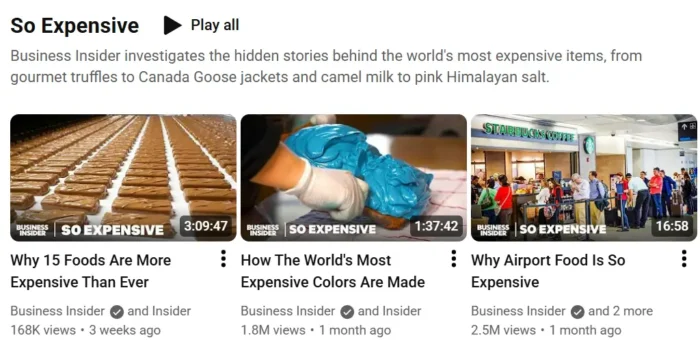
Avoid ALL CAPS or excessive punctuation. It reads like spam.
Pair your title with a strong thumbnail so the story connects visually. YouTube reads that combination as a signal of quality and relevance.
Add Closed Captions and Transcripts on Videos
Captions do more than make your videos accessible. They make them searchable.
When you upload closed captions or full transcripts, YouTube indexes that text. That means every word in your video becomes a keyword opportunity.
Turn on auto-captioning, but always edit the results for accuracy. If you already have a script, upload it as a transcript to save time.
Bonus: Captions help with international reach. You can upload translated subtitles for new audiences without creating new videos.
Think of captions as the hidden SEO layer that boosts both accessibility and discoverability.
Use YouTube Tags
Tags used to carry major weight in YouTube SEO; now, they play a smaller but still useful role.
Use tags to help YouTube understand your video’s context, especially if your topic has alternate spellings or similar keywords.
Start with 5 to 8 targeted tags, mixing broad and long-tail terms. For example:
“Video marketing” “YouTube marketing strategy” “How to grow on YouTube in 2025”Avoid adding dozens of unrelated tags, as it can dilute your relevance score.
Drive Likes, Comments and Subscriptions
Engagement is fuel for the YouTube algorithm. When people like, comment, and subscribe, YouTube sees your content as valuable and pushes it to more viewers.
But don’t just say, “Like and subscribe.” Give people a reason. For example:
Ask a question mid-video to prompt comments. Add a simple end-screen with a subscribe CTA. Thank viewers for specific feedback in your next upload.Subscriptions signal trust, comments signal community, and likes signal quality. Each tells YouTube, “This video was worth watching.”
Track engagement in YouTube Studio, and use those patterns to adjust your intros, pacing, and calls to action (CTAs).
Part 4: How to Produce a Great YouTube Video
Every strategy we’ve talked about so far leads here: the video itself. Your titles, thumbnails, and descriptions only work if the video delivers real value and keeps people watching.
Think of this section as the engine behind your YouTube marketing strategy. It’s where ideas turn into content that earns retention, watch time, and trust—the three metrics that drive long-term growth.
Let’s break down how to build better videos from script to finish: how to structure your story, hold attention, and guide viewers to take the next step.
Build Your Video Script
You don’t need a Hollywood script, but you do need a plan. Even spontaneous creators outline what they’ll say before hitting record.
A good YouTube script keeps your message tight, your pacing smooth, and your delivery confident. An outline like this is a good starting point:
Hook (0-10 seconds): Why this topic matters now. Setup: What you’ll cover and what viewers will get from it. Main content: Teach, demonstrate, or share insight clearly. CTA: What to do next. That might be to watch, subscribe, or click a resource.Write in your speaking voice. In other words, lean into short sentences and natural pauses.
The best videos feel conversational but stay focused. Always come back to why your audience should care. If a line doesn’t serve that, cut it.
Pro tip: record a test run. If your energy dips or you ramble, your audience will, too.
Create a Great Opening and Sustain Viewer Attention
YouTube’s data says the first 15 seconds of a video is your make-or-break moment.
So, start fast. Skip the long intro slides or slow fades. Jump straight into the payoff: the problem you’re solving or the question you’re answering.
Great openings often share three traits:
Strong hook: Lead with curiosity or a bold promise. Visual movement: Add a quick cut, prop, or change in camera angle early. Context: Tell them what they’ll learn and why it matters, quickly.A good example is my video titled “How to Master Social Media in 2025.”
Here, I:
Lead with the outcome (“Master Social Media in 2025”), not just the topic. Open with quick b-roll of trending social platforms before it cuts to me on camera; the motion and pattern change instantly catches the eye. Establish relevancy and immediacy within the first few seconds.In your videos, keep the momentum with pattern shifts every 15 to 20 seconds: zooms, graphics, or scene changes.
An average view duration of 50-60 percent is considered good, while anything above 70 percent is considered excellent. Hitting at least that 50 percent mark is key to YouTube continuing to push your video to new audiences.
Create Calls to Actions Through Info Cards and End Screens
A video without a next step is a dead end.
Use info cards and end screens to guide viewers while attention is still high.
Info cards: Add mid-video links to related videos or playlists. Drop them right after a key insight, not randomly. End screens: Use the last 20 seconds to point to one next video, a playlist, or a subscribe button, but never all three.Keep CTAs natural. Instead of “Please subscribe,” try, “If this helped, you’ll love my next video on [topic]. It’s linked right here.”
Check out this example from TPMvids.
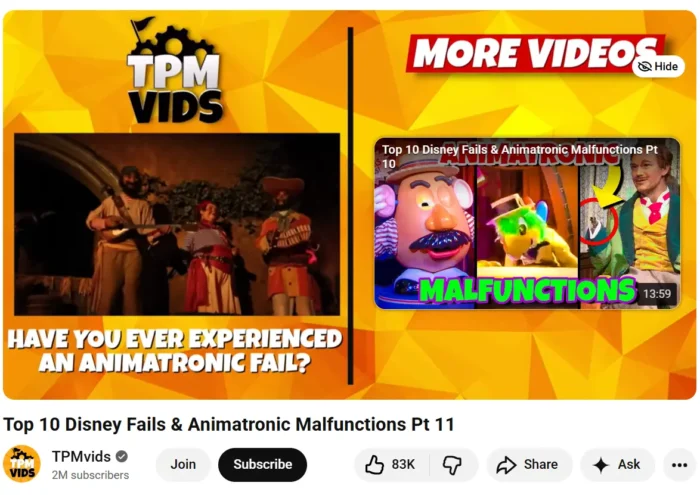
These small nudges turn casual viewers into repeat watchers and subscribers, which boosts session time. And that’s one of the biggest ranking signals in YouTube’s algorithm.
Part 5: Promoting Your YouTube Channel
YouTube’s recommendation system drives most discovery, but it’s not magic. You still have to push your videos into the world.
While most YouTube traffic comes from internal algorithmic recommendations, external shares and embeds drive some of the most engaged views, around 8–15 percent of total watch time.
And that can kickstart the algorithm to promote your video further, making promotion off-platform invaluable.
Promotion is where strategy meets visibility. In this section, we’ll cover four proven ways to get your channel in front of more viewers:
Cross-promotion on other platforms Collaborations Influencer partnerships Community engagementUsing Cross Promotion With Your Other Social Media Accounts
Don’t just drop your YouTube link everywhere. Tailor it. Each platform favors a different video format and audience mindset:
Instagram Reels / TikTok: Slice up your most shareable Shorts or punchy moments. Add captions and a CTA like, “Full breakdown on my channel.” LinkedIn: Share thought-driven clips or behind-the-scenes content that adds professional context. Facebook / X (Twitter): Post native teasers or thumbnails linking directly to your newest upload. Blog or email list: Embed full videos to keep people on-site longer.Here’s an example of a short clip my team dropped on TikTok.
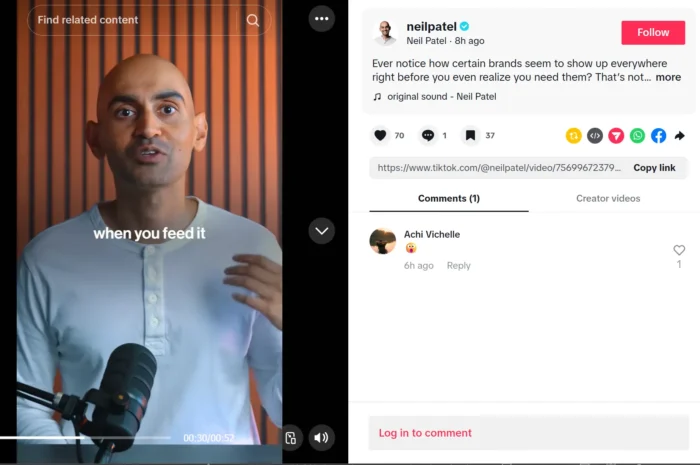
Cross-promotion works best when each post feels native to the platform. Don’t treat it like a copy-paste link dump.
Cross-Promote With Other Channels
Collaborations are the fastest way to borrow trust. Find channels with overlapping but not identical audiences. In other words, look for similar topics or complementary angles.
Start by searching your niche keywords and filtering by upload date to spot active creators. Tools like Social Blade can reveal engagement and audience size before you reach out.
Pitch collaborations that add value to both sides:
Co-host a live Q&A or short challenge. Swap “guest clips” where each creator adds one insight to the other’s video. Build a joint playlist that benefits both channels’ discovery.When you collaborate, you tap into built-in credibility. It’s one of the most cost-effective ways to introduce your content to qualified viewers.
Consider Influencer Marketing
One of the fastest ways to grow a YouTube channel is to borrow someone else’s audience.
Influencer marketing makes that possible.
You don’t need to work with A-list creators to see results. In fact, micro-influencers often drive better engagement than large creators. Their audiences feel more connected, which means more real traffic for you.
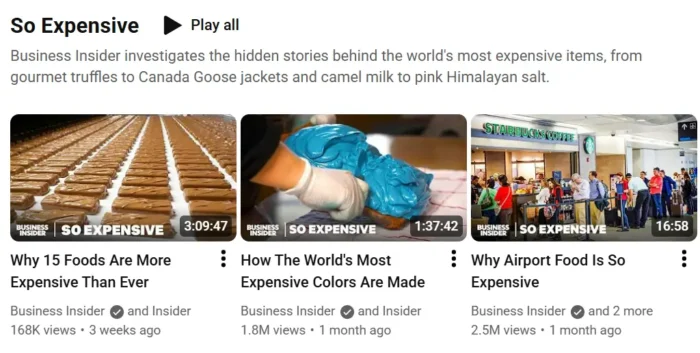
Start by looking for creators in your niche who share your target audience but don’t post the same type of content.
If you teach SEO, partner with a design or copywriting channel. You’ll both reach new viewers without stepping on each other’s toes.
Collaboration videos still work great. Film a challenge, swap expert tips, or make a guest appearance on each other’s channels. Just make sure the partnership feels natural and mutually beneficial. Forced collabs turn viewers off.
As your channel grows, return the favor. Supporting smaller creators builds goodwill and can bring you some of the most loyal fans you’ll ever get.
Build a Community on YouTube By Engaging With Your Audience
Community is what turns viewers into advocates.
Reply to comments within the first hour of posting. It boosts engagement signals and shows you’re active. Use the Community tab to post polls, updates, or behind-the-scenes thoughts between uploads.
Other smart plays:
Host live streams or ask-me-anythings (AMAs) to build real-time interaction. Shout out viewer ideas or feedback in future videos. Ask your audience for input on new topics or titles.Channels with active comment threads and regular audience participation tend to hold viewers longer. Engagement sends a strong signal to YouTube that your content is resonating, which helps videos appear more often in recommendations.
Your videos start the conversation that your community keeps going.
Part 6: YouTube Marketing Tools
Even great ideas fall flat without the right setup.
The good news?
You don’t need a production studio to run a professional channel. But you do need the right stack of tools.
Start with video creation and editing.
Descript lets you edit videos by editing text. It’s perfect for quick cuts, captions, and repurposing clips for Shorts or LinkedIn. CapCut and Premiere Rush are ideal for mobile and social-first editing, simple, fast, and powerful enough for branded content. If you’re producing tutorials, tools like Loom or ScreenPal (formerly Screencast-O-Matic) make screen recording easy.Next, focus on optimization.
TubeBuddy and vidIQ plug directly into YouTube Studio to help with keyword suggestions, tag ideas, A/B testing for thumbnails, and SEO checklists. Canva streamlines thumbnail design with preset YouTube templates and brand color kits.For analytics, lean on data:
YouTube Studio gives detailed retention graphs and click-through data, but pair it with Ubersuggest or Google Analytics to see how YouTube traffic flows to your website. Tools like Social Blade let you benchmark against competitors and spot growth trends.Part 7: YouTube Paid Advertising
Organic reach takes time, but YouTube ads can fast-track visibility when done right. Paid campaigns let you target by audience, topic, and intent. That way, your content reaches the people most likely to act.
Let’s break down the core ad types and how to make them work.
Understand the Main YouTube Ad Formats
YouTube offers several ad options, but these three drive the most results for marketers:
Skippable in-stream ads: Appear before or during videos. Viewers can skip after five seconds, so make your hook count. The first line and first visual should tell them why to keep watching. Non-skippable in-stream ads: Capped at 15 seconds; best for brand awareness or quick product demos. In-feed video ads: Show up in search results and “related videos” sections. These work like organic videos, ideal for promoting tutorials or long-form educational content.Best Practices for YouTube Ad Success
Hook immediately. Your first five seconds decide everything. Lead with a visual or statement that grabs attention. Target precisely. Use audience segments—custom intent, remarketing lists, or lookalike audiences—to reach people ready to buy. Keep it short and focused. Under 30 seconds is best for direct-response goals; longer formats work for storytelling or education. Add a clear CTA. Whether it’s “Learn More,” “Subscribe,” or “Shop Now,” make it obvious and actionable. Test variations. Run A/B tests on thumbnails, headlines, and CTAs. Even small tweaks can double performance.Pairing paid ads with your organic content strategy multiplies reach. You build awareness fast and nurture those viewers with helpful videos afterward.
Frequently Asked Questions
What is the best strategy for YouTube?
The best YouTube strategy starts with clarity. Know exactly who you’re creating for and what value you bring. Focus on consistent uploads, strong storytelling, and search-optimized titles and descriptions. Promote your videos across other channels, collaborate with related creators, and use analytics to refine what’s working. When your content and audience focus align, growth follows.
How to grow your YouTube channel?
Growth comes from momentum. Post regularly (at least once a week), engage with your community, and optimize each video for SEO. Create a mix of long-form and short-form content, and always include clear calls to action that turn viewers into subscribers. Collaborate with other creators to tap into new audiences and expand reach faster.
How do you attract subscribers on YouTube?
Creating highly engaging videos is the first step to attracting subscribers. But you also need to write great titles and descriptions, work hard to promote your videos, and collaborate with other YouTubers to raise brand awareness.
How to gain subscribers on YouTube?
Viewers subscribe when they trust your content and know what to expect. Make your videos clear, consistent, and valuable from the start. End each one with a reason to subscribe, like “new videos every Tuesday” or “more quick tips coming next.” Reply to comments, mention loyal fans in videos, and use playlists to keep new viewers watching longer.
What is the best content to create on YouTube?
The best content teaches, entertains, or solves a problem—ideally, all three. Tutorials, reviews, and “how-to” videos tend to perform best, especially when tied to specific search intent. Short-form videos (YouTube Shorts) are perfect for quick tips and discovery, while longer videos build authority and watch time. Test formats, watch your analytics, and double down on what your audience finishes watching.
Conclusion
Congrats on making it through this full YouTube marketing guide. Now you’re set to become the next YouTube star.
Start small, stay consistent, and focus on value over virality. Every upload teaches you something about your target audience and sharpens your message.
So grab your camera and get your ideas out there. Your next great video could be the one that changes everything.
You might not see huge traction after your first video, and that’s okay. Keep showing up with quality, purpose, and a plan. Over time, those small wins compound into serious momentum.

 JimMin
JimMin 































